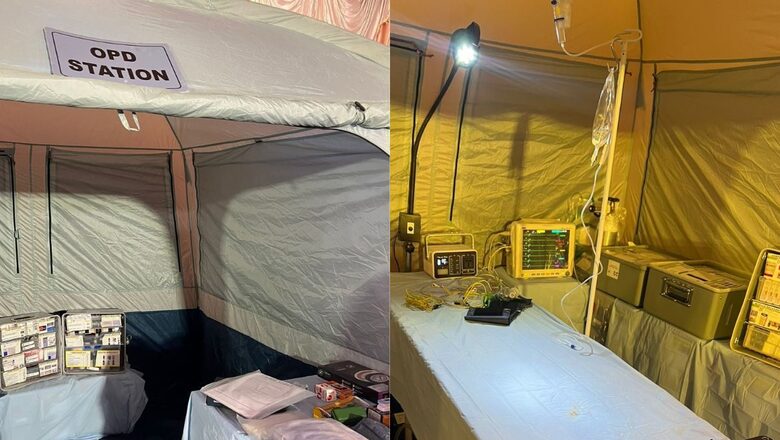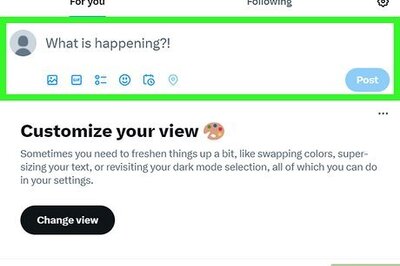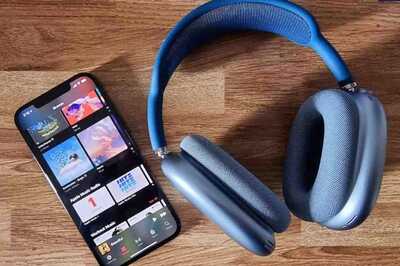
views
A response team deployed by the Uttar Pradesh government and two “one-of-a-kind” portable hospital units are part of the special arrangements, keeping in mind the massive influx of devotees in Ayodhya on the Ram Lalla idol’s ‘pran pratishtha’ on January 22.
The central government has made these arrangements in case there is an untoward incident like a natural disaster or even a stampede-like situation. An indigenous portable hospital – Arogya Maitri Aid Cube-BHISHM – will be equipped with tools designed to enhance disaster response and medical support during emergencies.
This state-of-the-art technology integrates artificial intelligence (AI), internet of things (IoT), and data analytics. It will facilitate effective coordination, real-time monitoring, and efficient management of medical services in areas where it is deployed.
The portable hospital, developed as part of the ambitious BHISHM (Bharat Health Initiative for Sahyog Hita and Maitri) project is a shining example of ‘Make In India’, and is being used in India for the first time at Ayodhya.
“It is a completely mobile unit that can be divided into 72 parts and carried by hand or even on a cycle or a drone if required. The same can be dismantled and reassembled, and be functional in 15 minutes or so,” Tanmoy Roy, head of the Arogya Maitri taskforce, told News18.
“We have all kinds of equipment, from ECG to ventilators. The whole purpose is to save as many lives as possible. The medicines and the equipment can deal with disasters. Even those like forest fires or disasters in hilly regions,” Roy said.
The Arogya Maitri cube is modular in design and there are two of these, referred to as master cubes, that can be joined together to support up to 200 survivors. To enhance the efficiency of the disaster hospital, a tablet-based application has been developed to operate all 72 cubes.
The kit includes a portable generator, featuring both traditional and solar panel-based options, that ensures a reliable power supply for the entire setup. All equipment can be charged, promoting sustainability in disaster relief operations.
Each unit has a medical store, a laboratory with a solar-powered unit to conduct over 24 tests, an out-patient department that shows medical reports where you can study an X-ray in three seconds and a solar-powered emergency operation theatre.
This cube was initially designed to help India’s neighbours, as two such units have been sent to Myanmar and Sri Lanka.
Apart from this, the Uttar Pradesh government has given a boost to the existing medical services by establishing a control room in the mela area, installing 16 first-aid booths and two fully equipped temporary field hospitals with 20 beds at Tulsi Udyan and 10 beds at Tent City Ayodhya, both of which will be functioning for 24 hours.
The state government has also taken vector-control and disease surveillance measures. A team from JPNA Trauma Centre at AIIMS, New Delhi, has conducted capacity-building exercises, imparting training on basic life support (BLS), cardiopulmonary resuscitation (CPR), triage techniques, emergency and trauma care, for all healthcare workers.

















Comments
0 comment